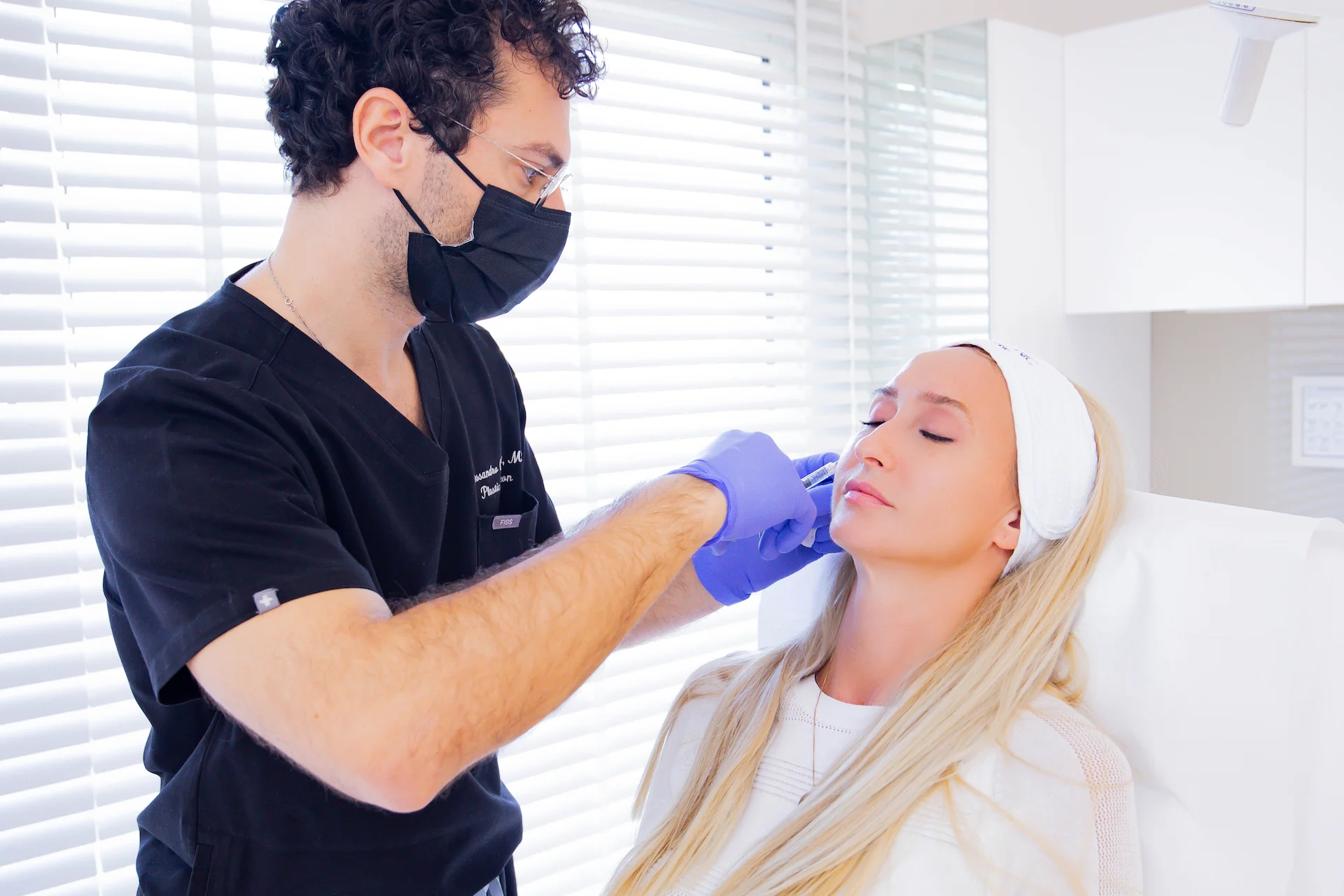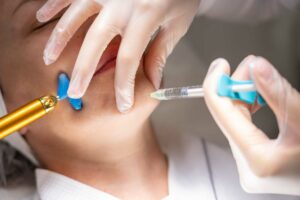Menu
GENERAL DIAGNOSIS OF SKIN DISEASES®
General dermatology focuses on diseases that can be seen with the naked eye. These diseases can appear on the skin, nails, hair and mucous membrane. Skin diseases can appear at any age and affect both men and women. When treating usual skin diseases it’s important to separate them from rare diseases or the ones that occurred recently. This is performed with the help of clinical and laboratory diagnostics, skin samples analysis and skin function testing. The doctor can diagnose the disease once the results are gathered. After that, the doctor can suggest the proper therapy or treatment.
DERMATOLOGY COVERS THE FOLLOWING SKIN ISSUES:
-
Prevention of skin cancer
the doctor examines the moles. -
ReFirme Body
this includes different body sculpting procedures and Anti-cellulite therapy. -
Varicose veins
the specialist diagnoses vein illnesses. -
Psoriasis
this illness usually appears on the scalp, knees and elbows in a form of scaly and itchy skin. -
Allergy diagnostic testing
The doctor performs the tests based on the patient’s symptoms and allergens. -
Rashes, eczema and itching
the doctor must diagnose the type of skin dermatitis properly because there are different forms of this skin illness. -
Rosacea and Couperose
When properly diagnosed, these skin diseases can effectively be treated with laser therapies. -
Hyperhidrosis or excessive sweating
the doctor must rule out hyper or hypothyroidism or vitamin deficiency before he/she can suggest treatment like Botox injectables. -
Acne
there are different treatments that address acne including Chemical peels and ClearSkin laser therapy. -
Nail infections
there are various illnesses that can affect the nails so they must be diagnosed by a specialist.
-
Wrinkle treatments
When properly diagnosed, these skin diseases can effectively be treated with laser therapies. -
Neurodermatitis/atopic eczema
This skin illness is characterized by itchy skin and scaly patches of the skin. -
Mucous membrane diseases and allergic skin therapies
These illnesses are usually caused by viruses and bacteria, or other immunity diseases -
Permanent hair removal
the doctor first rules out any underlying illnesses like PCO (polycystic ovaries) and hirsutism. After that, the patient can have effective and painless laser hair removal procedures. -
ReFirme Legs
these treatments include the reduction of varicose and spider veins. -
Skin cancer prevention
The doctor examines the patient’s moles with a method called dermatoscopy. The patient needs to check all new moles or the ones that have started to change their color, shape or size, or the ones that itch, flake, bleed or crust or are raised above the skin. -
Infectious diseases of the skin
There are various skin infections that must be diagnosed by a doctor. -
Removal of warts, cysts, moles and other lesions
moles and skin lesions are removed because of cosmetic reasons or for further analysis if necessary. -
Fungal diseases
there are a lot of different fungal diseases so they must be diagnosed by a doctor. - Hair loss and other hair or scalp illnesses
GENERAL DIAGNOSIS OF SKIN ILLNESSES INCLUDE
-
Allergy diagnostic testing
the patients can get a patch test or blood IgE test in order to find out what allergens are causing their allergy symptoms. After the doctor receives the results from the tests, he/she can suggest proper therapy. -
Neurodermatitis or atopic eczema
The doctor first examines the areas of the body where the patient has scaling and itching patches of skin. Before the doctor diagnoses this illness, he/she may send a small sample of the patient’s skin for biopsy just to rule out other illnesses. After that, the doctor can determine which treatment is the most effective for the patient’s concerns with neurodermatitis. -
Hair loss and other hair or scalp diseases
The doctor carefully examines the patient’s scalp to determine which procedure would be the safest and most effective for the patient’s hair restoration. The patient can undergo different injectable treatments that stimulate hair follicles to grow new and healthy hair. - Itching, rashes and eczema There are different forms of dermatitis that are characterized by redness, itching and dryness of the skin. The doctor needs to examine the affected area carefully which is generally on the neck, elbows or knees, to diagnose the right type of dermatitis. In some cases, the doctor might ask for a blood test, an allergy test or a skin sample biopsy before choosing the right treatment or therapy.
-
Infectious illnesses of the skin
these diseases are caused by different viruses, fungi or bacteria. The symptoms include redness, skin tenderness, itching or rash. The doctor needs to carefully examine the affected area in order to diagnose the causes of the skin infection. In some cases, the doctor can diagnose infection just by examining it but in other cases, the doctor might ask for a skin sample biopsy. -
Rosacea and Couperose
This skin illness is very usual and can affect men or women or younger generations. The symptoms usually include blushing, flushing, small bumps on the face or visible blood vessels. Once the doctor diagnoses rosacea, he/she chooses the most effective laser treatment that can reduce inflammation. - Rosacea and Couperose
- Hyperhidrosis or excessive sweating
- Acne
- Nail infections
-
Mucous membrane illnesses and allergic skin treatments
These diseases can appear on the mucous membrane of the mouth or genitals. The patient’s symptoms are examined by a doctor and if necessary the doctor asks for a blood test. When the mucous membrane illness is diagnosed, the doctor suggests the most effective therapy. -
Psoriasis
This skin illness appears when skin cells turnover faster than they normally do. During the initial examination, the doctor can diagnose psoriasis right away or ask for a skin sample biopsy. After receiving the results, the doctor can suggest which treatment will most effectively reduce itching and inflammation. -
Nail infections
These illnesses are generally characterized by pain, swelling and tenderness around the nails. The skin around the nails can get red and warm with pus building under it. The doctor must carefully examine the infected nail or nails to diagnose the infection and choose the right treatment. -
Fungal diseases
This skin illness can affect everyone. It is very important to diagnose the disease on time to prevent complications. Mild fungal illness looks like a rash and is quite common. It can develop in all body areas. In order to determine the best treatment, the doctor needs to carefully examine the affected area of the skin. -
Removal of warts, moles, cysts and other skin lesions
There are various methods for the removal of lesions and other skin growth. Once the doctor examines the skin lesion and diagnoses it, he/she determines which technique of removal is the most effective. Moles and other skin growth are removed for aesthetic reasons or in some cases for further analysis.
WHAT DOES DERMATOLOGIC SURGERY REPRESENT







